It’s been a long week and I’m tired, and with an even more grueling week to face ahead thanks to the strike that’s shut down the New Jersey Transit system, making my commute worlds more difficult and expensive. So I don’t have a whole lot to say this time out before diving into the meat. I already blew off enough of today that I’m getting started on this Newsletter hours later than I usually do. So let’s see just how much I can get accomplished before it’s time to send this thing out to the masses.
What that means is that we’re going straight into Q & A. Scoop, scoop, scoop!
Jeff Ryan
In a bit where art from an older comic is referenced -- a newspaper article of a past adventure, or on a computer monitor, or hanging on a wall -- I've noticed often the present-day artist redraws it. Does it count as a "reprint" if for one panel we see, say, George Perez's Avengers or John Byrne's Uncanny X-Men?
if we were to use old art for such flashbacks, Jeff, it would certainly count as a reprint. But I think what you’re really asking is whether we’d have to pay the original artists for it. And the answer is no, not for the reuse of a panel or two. That said, it’s often simpler all around to have the modern artist redraw a moment like that than it would be to source the original panel and make whatever adjustments to it that might need to happen, such as taking out existing balloons and captions. So it mostly isn’t worth the additional trouble.
Zac
Are there ever conversations to bring back artists from that era for these stories? I mean no offense or disrespect to any of the artists that are brought in to work on these. I just wonder about that. For example, Marvel has Adam Kubert under contract and he was one of the defining artists of the era and the AoA event.
Sure, bringing back classic artists for projects such as X-MEN OF APOCALYPSE is considered, Zac. But it isn’t as simple as you make it out to be. In this case, Jeph has a specific story that he wants to tell, and he wants to do it with Simone Di Meo, an artist whom he’s grown close with since meeting him in Italy. So the pitch for this project was always Jeph and Simone, it wasn’t a case where we were casting around for an artist for it. But if it’s Adam you’re looking for, GIANT-SIZE X-MEN #1, which he drew, drops this week.
Ben Morse
Kind of a big question here, Tom, but I was wondering if you could speak to the challenges of crafting events in the open ended world of comic books. I’ve been having a lot of conversations with my students in particular lately about the post-Endgame MCU and how movies were designed to be more finite, even if you’re telling a big story over many years. However, the minute you finished Civil War, it was on to Secret Invasion—rinse, repeat ad infinitum. How do you make each next one as big as the last one?
I don’t think that you do, Ben. Rather, I think you try to make each subsequent event different from the ones that it’s following, so it doesn’t seem like just more of the same. And even CIVIL WAR was markedly different from HOUSE OF M, which came the year before it.
Seastar
Who handles the What If brand of stories? As in, which editorial department does that fall under? Would a writer for an issue of What If? have to clear any What If scenario with the editor of that character's office? For example, if someone was writing a What If about Cyclops being abducted by the Shi'ar along with his parents, would they ask you for permission first? Or similarly Nick Lowe for any What Ifs about Spider-Man characters?
WHAT IF isn’t really a franchise per se, Seastar, so it’s different editors depending on the stories being told who wind up editing WHAT IF projects. And pretty much everything that happens within the pages of a WHAT IF is by definition invalid in the mainstream Marvel Universe—so while an editor might want to check on the particulars of something with the regular editor of the characters in question, if a WHAT IF story established that, say, Spider-Man was stronger than the Juggernaut, that wouldn’t have any bearing on the regular MU.
David Brazier
do you think it would have been better if Marvel had kept Wolverine’s Origin and background as a mystery rather than revealing it?
I was in the room when the decision to reveal Wolverine’s origin was revealed, David. And I can tell you what convinced me completely that there was no other choice other than to do it. It was Bill Jemas who said that, given the success of the first X-MEN film, if we didn’t do the story of Wolverine’s origin, the movies certainly were going to—and then we’d be stuck with whatever they came up with. Beyond that, I don’t know how truly satisfying it would have been to have continued to string out the mysteries of Wolverine’s upbringing for another 25 years or so. Even at the time, that mystery had become an overused trope, with a lot of messy and conflicting information given out in different stories. So at some point, somebody was going to get there, and soon.
Pandoro
Is Kid Omega in Vigil?
Yes.
Peter Hohman
- you mentioned that then-contemporary issues of The Flash would come in your Marvel comp boxes. How many competitor titles did/does Marvel send to editors? I never realized those comp copies would include comics from other companies, but it certainly makes sense to keep an eye on what's working or not working from the competition and identify talent not currently employed by Marvel. Are comp boxes typically just top-selling titles, big two stuff, or is it a wide market sample?
For decades, Marvel and DC had an arrangement in place, set up back in the 1970s, where each company would provide the other with a certain number of copies of its weekly output to share among the staff. This arrangement lasted until DC moved to the West Coast, at which point my understanding is that they did away with comp copies even for their own editors, giving them access to digital copies instead. And at different points, there were other short-lived arrangements with other companies, so at times we got certain other company’s titles as well. These days, though, it’s only Marvel books that are distributed.
Pedro Ivo Dantas
I was thinking the other day about how remuneration works in the industry. I mean, as far as I understand it, usually the penciller is paid a certain amount per page, the inker the same, the color artist, etc. But what happens if the artist delivers the pages already inked, does he gets double pay? This seems to be getting a lot more common nowadays, thanks to the switch to digital art - or at least that's my perception. And in there case of painted art, that doesn't need inker nor colorist, does the artist gets a much higher rate?
On the other hand, if an artist only does breakdowns and leaves the details for the inker to fill in (like was famously the case with John Buscema and Tom Palmer in Avengers), does he gets a diminished rate? I'm not an artist and have no plans to work for Marvel, just wondering how you manage this kind of thing.
Each artist has specific rates for every discipline, Pedro. So if an artist both pencils and inks the pages, they are paid for both jobs, not just one. And the same is true for breakdowns and finishes as opposed to pencils and inks. So breakdowns pay less than full pencils and finishes pay more than regular inks.
Mark Paglia
Does the ready availability of the Marvel wiki and such inform how much backstory a comic rehashes?
No, Mark. At speaking for myself, I don’t think it’s fair to expect any reader to need to go off and do their own Internet research in order to understand the story at hand. The work has to include everything that a reader needs in order to be able to understand and enjoy it, regardless of the availability of wikis and the like.
JV
In regards to the Clone saga - was it true that sales fell on the Spidey titles at a certain point? And that is what finally cause the resolution (and relaunch I believe)? Or is that an urban legend and sales remained strong/stable throughout the multi year saga?
The entire industry underwent a contraction around 1995 or so, JV, so sales fell across the boards. But all during the Clone Saga, Spidey sales remained strong—and they didn’t markedly soften until after the story had run its course. Readers may have only been hate-reading it, but they kept on doing so right up to the end of the story.
KB
Seeing that line right after you mentioned a Fantastic Force issue you wrote made me wonder about your experiences as a writer versus editor. How did your time with each role influence your approach to the other?
I don’t know that it actually did, KB. I’m sure that at times it gave me a sense of what not to do, but frankly, I was so ill-equipped to be writing Marvel books in the first place that my focus was entirely on that—and often pushing in the wrong direction. When I say that I didn’t know what I was doing, I make that statement with the hindsight of the years of experience that have come since.
David Lowe
some runs and writers obviously aim for older or younger readers with more sophisticated themes vs. fun-filled action. I get that titles with younger characters make sense for younger readers (Spider-Boy, Strange Academy, etc.) but how do you decide when to shift the focus of other major titles? For example, Hickman, Gillen, Ewing and Duggan took the X-Men into mature political themes during the Krakoan Era, and that has now softened somewhat, while the current FF run under Ryan North seems to be aimed at younger readers. Is that deliberate to make a title or team more broadly accessible for the upcoming movie?
I suspect that you’re perhaps making a value judgment that the creators and editors doing those books aren’t making, David. Speaking for myself, I don’t see FANTASTIC FOUR as being aimed at any different a readership than those earlier runs that you maybe liked better. The same is true of X-MEN. I think on both of those series, we’re after readers of all ages, and if you liked other previous runs better, that’s fine. But I don’t see it as in any way an attempt to either dumb down or talk down to the audience for those books.
Yliaster
So the previously announced New Thunderbolts* book was renamed to New Avengers, like the movie. The "New" in "New Thunderbolts*" makes me believe it was known all along. How much detail is shared for upcoming movie releases when doing these synergy books?
It varies from project to project, Yliaster. But in general, we learn about the broad strokes of what the Studios teams are planning early enough to be able to effectively synergize in most situations, should we choose to do so. But just like us, their plans tend to change and shift as they develop them, so there isn’t any set clock on this. In the case of NEW THUNDERBOLTS, yes, we knew about the movie’s title change well ahead of time.
Caleido
could you tell us what is your fave PHOENIX issue so far and why? I loved issue #8, its so intimal and cover a lot of Jean sensitive topics
Sorry, Caleido, but I don’t know that my favorite issue really matters. It’s what you and others like you like that really counts here. But glad you enjoyed #8!
Aisling Clarke
Do you think we'll see Escapade (Shela Sexton) in a comic-book like New Mutants, X-Men, The Uncanny X-Men, Exceptional X-Men, or something similar?
Escapade has been appearing regularly in the AVENGERS ACADEMY Infinity Comics track on Marvel Unlimited, Aisling. While that’s the case, I don’t think it’s likely that we’d bring Escapade into another series as a regular character, though a guest-starring role is always possible.
Ray Cornwall
obviously, the Marvelution reorganization did not work. As I recall, sales did not increase, the comics didn't get better as a whole, and a whole lot of good people lost their jobs a year later. And yet, we do have a Marvel editorial structure today that shares some similarities with that structure. For example, you head up the X-Men books, Nick Lowe handles Spider-Man, Will Moss handles the Avengers, Mark Paniccia handles Star Wars, and Lauren Bisom handles licensed books. What do you think are the key differences between the "Marvelution" structure that didn't work then and the structure you have today that is (presumably) successful? Is it the addition of you and CB above the structure? Is it the fact that 1995 Marvel was in poor corporate shape and today's Marvel is a part of the overall Disney corporation?
The Marvelution set-up wasn’t at all like the current editorial set-up, Ray. During that time, editorial functioned as effectively five separate spall companies, all competing with one another for talent and resources rather than working as a single unit as it’s done at all other times. So there wasn’t anybody charting the direction for the unit as a whole, and a certain amount of competitive in-fighting became the norm. It was really a stupid way to organize an editorial department unless the end goal was to minimize the authority of anybody involved—which is kind of was.
Kenny Arena
Any chance of seeing (sorry, I know you get this type of question all day), an appearance from any of the original Guardians of The Galaxy (Guardians 3000)? Visually, they are some of the coolest characters and could be a lot of fun to see again.
I don’t think we’ll be seeing the futuristic Guardians at any point during IMPERIAL, Kenny, sorry.
Off The Wall
What you see here is a page from SLEEPWALKER #13, the one and only issue of the series that was penciled by Joe Quesada and inked by Jimmy Palmiotti. Jimmy gave it to me after I bumped into him at a small show that we were both attending—this was prior to the Marvel Knights era, and I suspect that interest in pages of SLEEPWALKER was relatively low. Still a nice thing for him to give me. If I’m remembering right, he also gave me a print of the team’s cover for a then-recent issue of GHOST RIDER at the same time.
On The Spinner Rack
Here’s what I’m looking at in my home office this week. We start off at the top with a coverless copy of FANTASTIC FOUR #21, followed by JOURNEY INTO MYSTERY #124 and then UNCANNY X-MEN #97—a British edition of that last book, hence the 9p cover price and the MARVEL ALL-COLOUR COMICS banner. Next is a Marshall Rogers-drawn issue of MISTER MIRACLE, a random issue of DAREDEVIL from the 1970s, the first part of the BATMAN/GRENDEL crossover book by Matt Wagner, and an issue of MARVEL TRIPLE ACTION reprinting the first appearance of Hank Pym as Goliath. Then there’s a coverless Archie issue from the 1960s where Archie was in his heroic identity as Pureheart the Powerful, an issue of DOUBLE DRAGON that I wrote a lifetime ago, and finally an issue of Acclaim’s revival of MAGNUS: ROBOT FIGHTER.
And over on the rack devoted to books I put out, we’re back around to the AVENGERS: CHILDREN’S CRUSADE side. An issue of Dan Jurgens and John Romita Jr’s THOR comes next, followed by the 45 Anniversary Issue of FANTASTIC FOUR. Then there’s a TALES OF SUSPENSE one-shot that reprints the first issues of both IRON MAN and CAPTAIN AMERICA that I edited, the first issue of the SPIDER-MAN/HUMAN TORCH limited series and the first issue of GLA, both written by Dan Slott. Under that is a Priest-written issue of BLACK PANTHER where the cover copy is misspelled—oops! Next is the SPECTACULAR SPIDER-MAN issue that Paolo Rivera painted, an issue of the UNLIMITED ACCESS crossover limited series, and another issue of FANTASTIC FOUR from the Waid/Wieringo run.
I Buy Crap
C.B. Cebulski just came back from spending a few weeks in Japan, and he brought me the item that you see below, which was available at Tokyo Comic Con: a FANTASTIC 4 FIRST STEPS tea cup. These aren’t available elsewhere just yet, but realizing the need to prime the pump for the upcoming film in a nation where the public really isn’t all that familiar with the characters, Marvel Studios allowed for these to be sold there earlier than elsewhere. It’s a high-tech item that generates its own internal gravity, which keeps your beverage inside the cup even while traveling through cosmic ray storms in space.*
*Tom is a known liar, the cup is just an ordinary porcelain drinking cup, it has no special properties.
Behind the Curtain
For a time, the long-running fanzine AMAZING HEROES had a regular feature dedicated to fan drawings of funny fake covers. Here’s one that appeared in an early issue around 1982.
The thing that makes this particular cover noteworthy is that it was drawn and submitted by a young Bruce Timm, who’d later go on to be a stories character designer and director on a slew of primarily DC-themed animated series and projects. And even as early as 1982, there were clearly certain tropes in writer Chris Claremont’s stories that came up again and again and were rife for parody.
Pimp My Wednesday
We have a trio of releases for you this week.
GIANT-SIZE X-MEN #1 is the kickoff to our multi-month celebration of not only the 50th anniversary of the All-New, All-Different X-Men, but also the anniversaries of a number of key X-Men stories from across the years. But this one's entirely new, cover to cover—not a reprint or anything. And it contains a new story written by Jackson Lanzing and Collin Kelly and wonderfully illustrated by Adam Kubert and Laura Martin that sees the Kamala Kahn of today thrust backwards in time, where she’s witness to a number of key events in mutant history. In addition, each of the GIANT-SIZE books that make up this series also contain what we’re calling a Revelation back-up, where we reveal some hidden secrets and set up some upcoming stories in a hopefully-tantalizing manner. First up are Al Ewing and Sara Pichelli, who tell the tale of the one mutant who didn’t participate in the events of the original GIANT-SIZE X-MEN #1.
It seems like we just had an issue of UNCANNY X-MEN come out, but that’s what happens when you’re releasing a title 18 times in a calendar year. This one’s part three of the “Dark Artery” storyline that sheds some light on the X-Men’s new New Orleans home as well as the young characters who have come to live there. It’s by Gail Simone and David Marquez.
And finally, we have the concluding chapter to CABLE: LOVE AND CHROME by David Pepose and Mike Henderson. I have to say, I’m really happy with the way that this story turned out, even as it deviated somewhat from the initial idea that I’d put together. But I think it’s a Cable story that somebody who’s unfamiliar with the character can read and get into, and it packs a couple of nice punches in this closing installment.
A Comic I Worked On That Came Out On This Date
Poor old CIVIL WAR II released its #0 set-up issue on May 18, 2016, nine years ago. This was the final big Event storyline that writer Brian Michael Bendis worked on while he was at Marvel, and unfortunately, it never quite came together the way everybody hoped it would. For one thing, it got built backwards to a certain extent. Knowing that the CAPTAIN AMERICA: CIVIL WAR film was coming out that summer and was going to be heavily promoted, we decided to attempt to capture some of the interest in the film by doing this quasi-sequel to the original CIVIL WAR. Now, you can start off with a goal like this and eventually get to a story that really works, but in this instance, it was a struggle from start to finish. Brian was game to take the project on, and he had great visual support from Olivier Coipel on this #0 issue and then David Marquez on the series proper. The real difficulty was the different people had different opinions on what the story ought to entail, and we never quite managed to get everybody on the same page and pulling in the same direction. In particular, the ending never crystalized. Originally, the ongoing conflict that had been spun up around the newly-activated Inhuman Ulysses, whose ability to predict the future raised questions about how far it was ethical to go to prevent crises and punish those who intended to do wrong, but hadn’t actually done so yet, was intended to climax with Ulysses’ death, thus eliminating the entire point of contention without the heroes on either side of the divide having to compromise their principles. But Brian wasn’t comfortable with that conclusion, feeling that it was too much of a downer—and he may have been entirely right. Either way, the published version, in which the assorted cosmic powers of the universe show up to usher Ulysses into a new role on a cosmic level, leaving the concerns of humanity behind, was pretty unsatisfying to readers as well. There are a bunch of good moments in it, and at least one stand-out issue—INVINCIBLE IRON MAN #14, in which the leaders of the two sides, Tony Stark and Carol Danvers, run into one another at an Alcoholics Anonymous meeting—but the final result paled in comparison to the first CIVIL WAR.
Another Comic I Worked On That Came Out On This Date
The first issue of the second iteration of SAVAGE AVENGERS came out on May 18, 2022, only a few years ago. It was a bit of an odd birth, for all that the end product turned out well. Prior to this, a few years previous, Marvel had once again licensed the rights to Conan the Barbarian. In addition to telling classic stories of the Cimmerian in his native Hyborean Age, there was a desire to also mix him together with the Marvel Universe—people recalled how intertwined he had been with the Marvel characters back in the 1970s, even if most of it was through licensing. So we wound up bringing the character into contact with the Marvel Universe in the second AVENGERS weekly series NO ROAD HOME. From there, we dropped Conan into modern times, and followed his adventures in the present in the pages of SAVAGE AVENGERS, a series designed to bring together many of the biggest badasses in the MU. It was really a series that shouldn’t have worked, but writer Gerry Duggan, backed up by a number of great artists including Mike Deodato and Patch Zircher, really struck the exact right tone for the book—not too serious, but always respectful to Conan as a character. It was a very fun, very unexpected book. Eventually, though, the terms of the licensing deal were coming to a close, and so we wrapped up SAVAGE AVENGERS, having Kang transport Conan back to his home time at the end of the series. But then, something happened: unexpectedly, an additional year was added onto the licensing agreement. Given that SAVAGE AVENGERS had still been selling well, we pivoted very late in the game, adding an additional “post-credits page to the final issue that had Kang bring Conan back to the present. But that that point, Gerry had wrapped up his story and had moved on to other things, and we were likely only going to have access to Conan for a couple of months more. Additionally, I had been looking to try an experiment in “moneyball casting”—which is to say, typically our ongoing titles end up being produced by our most expensive talent, because that talent is seasoned and popular and is what helps create the series’ longevity. But the advantage that had been providing in the past has been seemingly eroding away as the marketplace became more competitive, and so I wondered to myself: if you used newer talent on a series and consequently spent less money on it, might you be able to keep it profitable for a longer period of time? Faced with the need to set up a new iteration of SAVAGE AVENGERS, one that had a bit of a ticking clock built into it right from the start, I decided to cast it with relative newcomers and see if that might be more beneficial. All of which leads us to writer David Pepose. I first became aware of David when he was doing comic book reviews at a widely-trafficked comic book news site. I generally don’t pay a whole lot of attention to such reviews, but Pepose in particular was both a harsh grader and a pointed critic—his reviews of Marvel books always tended to throw off their review averages, with enough regularity that I took notice of it. He panned some books that I thought were pretty good—entirely his right as a reviewer, you know. But he’d gotten onto my radar, and not really in a good way. Eventually, he made the move to switch to the other side of the desk, attempting to break into the field as a writer. In one of our earliest interactions as he was trying to ply me for a chance at some writing work, I told him that I was aware of the severity of his reviews, and that, consequently, I was going to hold his own work to a similar standard. The specific line I uttered was, “In your case, good enough isn’t good enough.” But he kept sending me copies of his work, and began to get some good notices for his series SPENCER & LOCKE, which is more-or-less a grown up version of Calvin and Hobbs, where Calvin has become a Police Detective. So I was open to giving him a chance—and as a young writer, he fit the remit of being affordable. So I asked him for a pitch, outlining the parameters of the series, and he came back with what in essence amounted to CONAN vs TERMINATOR, with Deathlok in the role of Arnold Schwarzenegger’s other iconic character, pursuing Conan to eliminate him from where he was polluting the timestream. I liked it enough on a premise level to give him a shot at the series, and paired him up with Carlos Magno, a young artist who had done some work for me on a recent INVADERS series that Chip Zdarsky had written. And again here, we pulled together an assortment of more hard-edged characters from across the MU to make up the cast, and sent them off on a wild time-tripping adventure. We wound up needing to write Conan back out after the first arc, and the series only lasted 10 issues, so there wasn’t any great advantage proffered by the moneyball approach in this instance. but it was enough to break David into my office and get him onto my radar—to the point where he’s completing the CABLE: LOVE AND CHROME limited series this very week.
The New Warriors Chronicles
NEW WARRIORS #62 was the issue that really turned the fortunes of the title around and made it a viable entity going forward again—and that was all down to the inclusion of the Scarlet Spider as a member of the team beginning with this issue, a development that had been effectively forced on everybody by Spidey EIC Bob Budiansky, despite the fact that neither the Spidey guys nor my crew being very happy with the idea. But give Bob credit, because including Ben Reilly did exactly what it was meant to do, it brought a lot more eyeballs to NEW WARRIORS right at the moment that the series desperately needed them.
To mark the occasion and signal the change in direction, I had a new logo commissioned for the title beginning with this issue. To be honest, I really liked the previous logo a whole lot, and didn’t especially want to change it. But I knew that making such a change was a clear way of signaling to readers eyeballing the book on the stands that something different was going on here. Additionally, we began carrying the Spider-Man Group trade dress beginning with this issue—which is a bit of an eyesore as when we commissioned the cover, Patrick Zircher wasn’t aware that it was going to be there. Consequently, the Scarlet Spider’s arm is awkwardly covered by it in a way that I find unfortunate. ( As is the tangent between Scarlet’s foot and that top banner.) Otherwise, this was one of our more successful covers up to this point.
I think our big concern with bringing Ben into NEW WARRIORS was in not having the series turn into “Spider-Man and his Amazing Friends”, which it easily could have. So while we were good soldiers in going along with these developments (and using the MAXIMUM CLONAGE ALPHA issue to set up another character, Helix, who we envisioned as a future member of the team (but in this issue plays as an antagonist) we also made sure to weight this issue with as many of our ongoing subplots as we could, in order to hopefully carry along and convert some Spidey readers along the way. So here we finally have Rina Patel make contact with the Warriors through Hindsight, and we reveal her time-shifting speed powers (which writer Evan Skolnick had come up with once we realized that simply being able to swap places with other temporal versions of yourself made for a lousy power set in combat situations) and accelerated events with the missing Namorita, who was being brainwashed by the villainous Protocol. And we also kept the powerless Rich Rider on the boil, a member of the cast despite having lost his Nova abilities.
And I think we did a decent job of selling the idea that the Scarlet Spider would be interested in being a part of the group, given that he’d spend the prior five years cut off from family and friends, a loner by necessity rather than choice. And also that Firestar in particular would be motivated to make such an offer. We played with there being an attraction between Angelica and Ben, which makes sense on a surface level at any rate in that Spidey has a thing for redheads. But it also let us build some tension into the otherwise-idyllic relationship between her and Justice, which was good for soap opera if nothing else.
But the thing that worried me the most about this issue was the fact that, when it came out, Spidey Group Editor Danny Fingeroth (whose position as the leader of the group had been given to Bob, creating additional friction between them and the various staff members who worked with them) made it a point of noting just how good Zircher’s Scarlet Spider looked. I was concerned, because Danny was editing four core Spider-Man titles at that point, and always had need for fresh new artists who could work in the sort of style that he preferred. I figured that it was only a matter of time before he stole Patrick out from under me and put him to work on Spider-Man books—which would have been a good break for Zircher, but not for NEW WARRIORS or me. But Danny didn’t stick around for much longer. Justifiably slighted by having been passed over, he wound up taking a job at Byron Preiss Media, where he headed up its short-lived comic book division. At that point, I could relax a little bit as far as Zircher was concerned.
Monofocus
I spend an evening or two this week reading through the new MAY 1965 Marvel Omnibus, which collects the entirety of the line that was released during that month—the month in which the Nick Fury, Agent of S.H.I.E.L.D. series debuted in STRANGE TALES. I’ve read pretty much everything collected in this volume before, but never quite in context with one another, and so this creates a good sense of where the Marvel line was in its development at this point. Fans had occasionally asked for month-themed collections like this one, which always seemed like a terrible idea to me, because who was going to purchase these month after month. But by keeping each one to a specific key month in a specific year as we’ve done, we eliminate the need to collect absolutely everything, and can instead get across a picture of what Marvel was like and how it was developing at a particular moment in time. Especially fun is that these volumes collect everything, including the western titles and the girl series such as PATSY WALKER and MILLIE THE MODEL. You can sort of see those books become less and less important to the overall picture as the dates get later and the super hero material really begins to heat up. It’s clear that the best and most accomplished talent wasn’t working on those books, which became both a place to try out new creators safely as well as a place to park old timers who still needed work but whose approach was a bit old-fashioned for where Marvel was going. Anyway, no surprise, I dug it.
I also watched the first episode of GENIUS GAME, the British adaptation of the very best Korean reality game show, THE GENIUS. I’m told that the UK version is already something of a bomb, and I can see why. On the surface it’s very similar, with a group of accomplished professionals competing in a series of very difficult mentally challenging games with losing players getting eliminated one by one. Clearly, somebody on the production side was hoping that it would become the same kind of success as THE TRAITORS, which has exported its production all around the world for localized versions. But while it’s ostensibly the same show, and even uses many of the same games, the productions are entirely different. I think this comes down in large part to a difference in the cultures of the two nations. The players in the Korean version are legitimately super-smart, super-accomplished people, and there’s a clear respect for an advocation of intelligence and cleverness and problem-solving in the production. The UK cast, on the other hand, feels like it was pulled from a cross-section of the British public. These aren’t stupid people, but they aren’t as clearly whip-smart as the Korean players. There’s more of a blue collar flavor to the show, which tends to fight the concept a little bit. Additionally, rather than the faceless figure who hosts the Korean version, GENIUS GAME has brought in David Tennant as the master of ceremonies. David is charming as ever, but the role he’s playing here is very much akin to Claudia Winkleman on THE TRAITORS. So he’s slightly smarmy, slightly edgy, and is somewhat discordant with the format as well. I’ll likely sit through at least one more episode, because I loved the original so much, and David Tennant is almost always entertaining. But I can see why this didn’t appeal to the intended audience. It’s too highbrow and complex, even as it’s been a bit dumbed down and general audienced.
And finally, I was happy to see that WELCOME TO WREXHAM has come back for another season. This one’s going to be something of a different viewing experience, though, because ever since the show came on the air, the media has become far more interested in the Wrexham Football Club, and so I’ve already seen reportage about exactly how this latest season played out. So any degree of suspense is a bit undercut, knowing the conclusion even as the documentary series begins that journey. Even with that, though, it still remains very much a real world TED LASSO sort of endeavor, and I find it very palatable to experience.
And just to cover the bases, at this point the television season is in full swing, meaning that I’m watching something new almost every day of the week, including episodes of LAST WEEK TONIGHT, MY HERO ACADEMIA: VIGILANTES, MOBILE SUIT GUNDAM GQuuuuuuX, POKER FACE, THE STUDIO and DOCTOR WHO among others. So I’m fitting everything else in around those regular broadcasts, at least until those seasons wrap up. And I’ve not yet been able to catch the second seasons of SEVERANCE or ANDOR, or get further into SLOW HORSES, or to try out DARK or BET or a number of other shows that I’ve been eying. It’s honestly a pretty good problem to have, too much interesting content to fit into the day. But it can make it challenging to make decisions as to what warrants time and attention.
Posted at TomBrevoort.com
Yesterday, I wrote about this week’s strong episode of Doctor Who
Five years ago, I wrote about the first half of the final chapter of Leo Ortolani’s LAST FANTASTIC FOUR STORY
And ten years ago, I wrote about this Great Cover
Whew, and that’s it! Sorry for this being a bit choppier than normal—I wish that I could promise you better service next time, but we’ll have to see just how the coming week goes. But we’ll all know how it turns out in seven days, so see you then!
Hat’s All, Folks!
Tom B

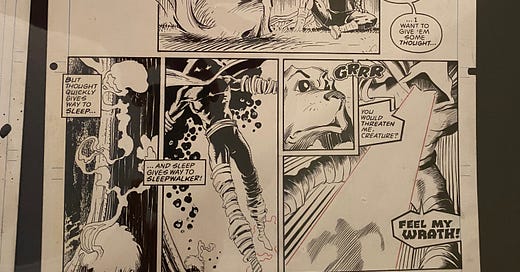



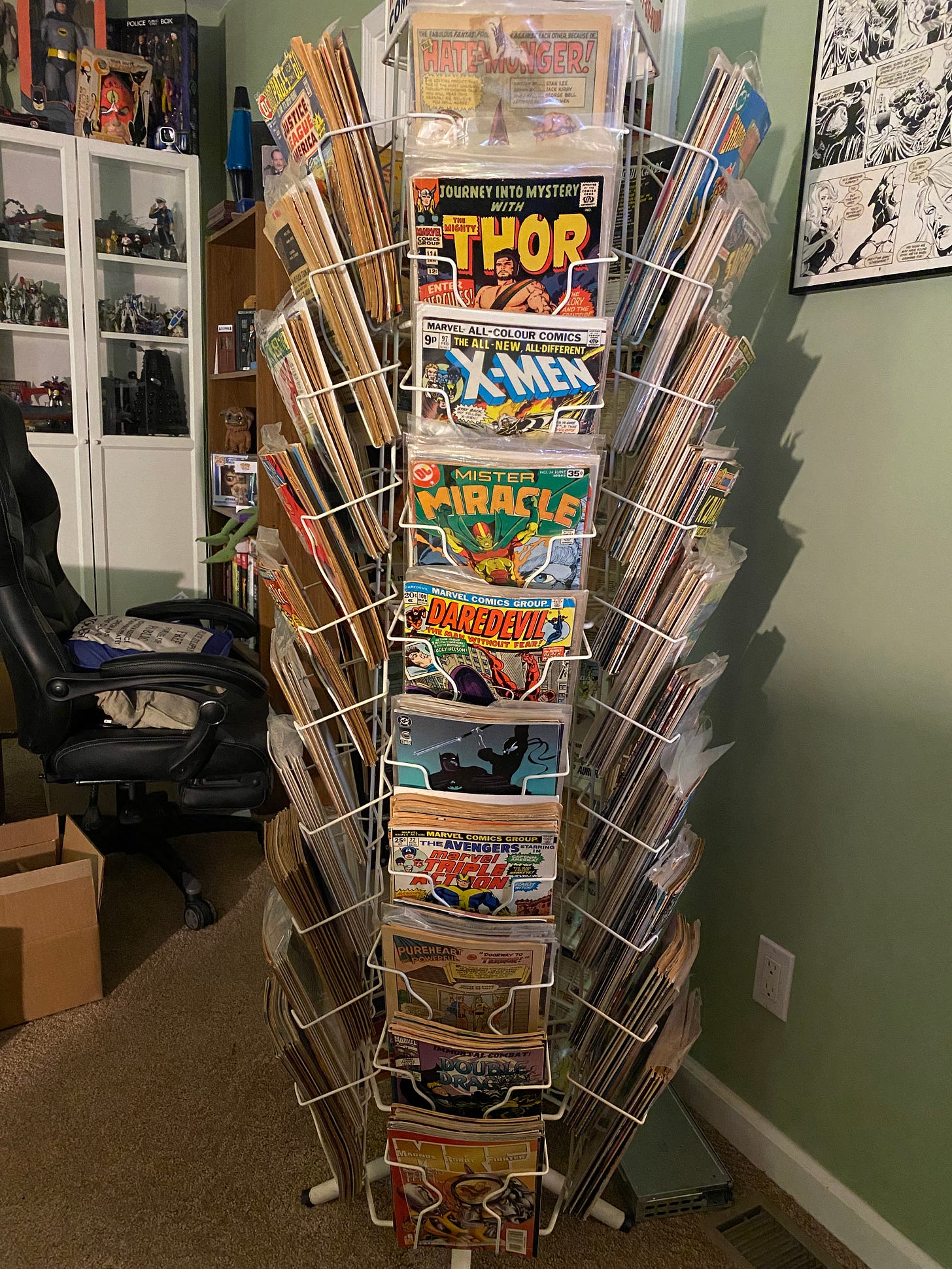

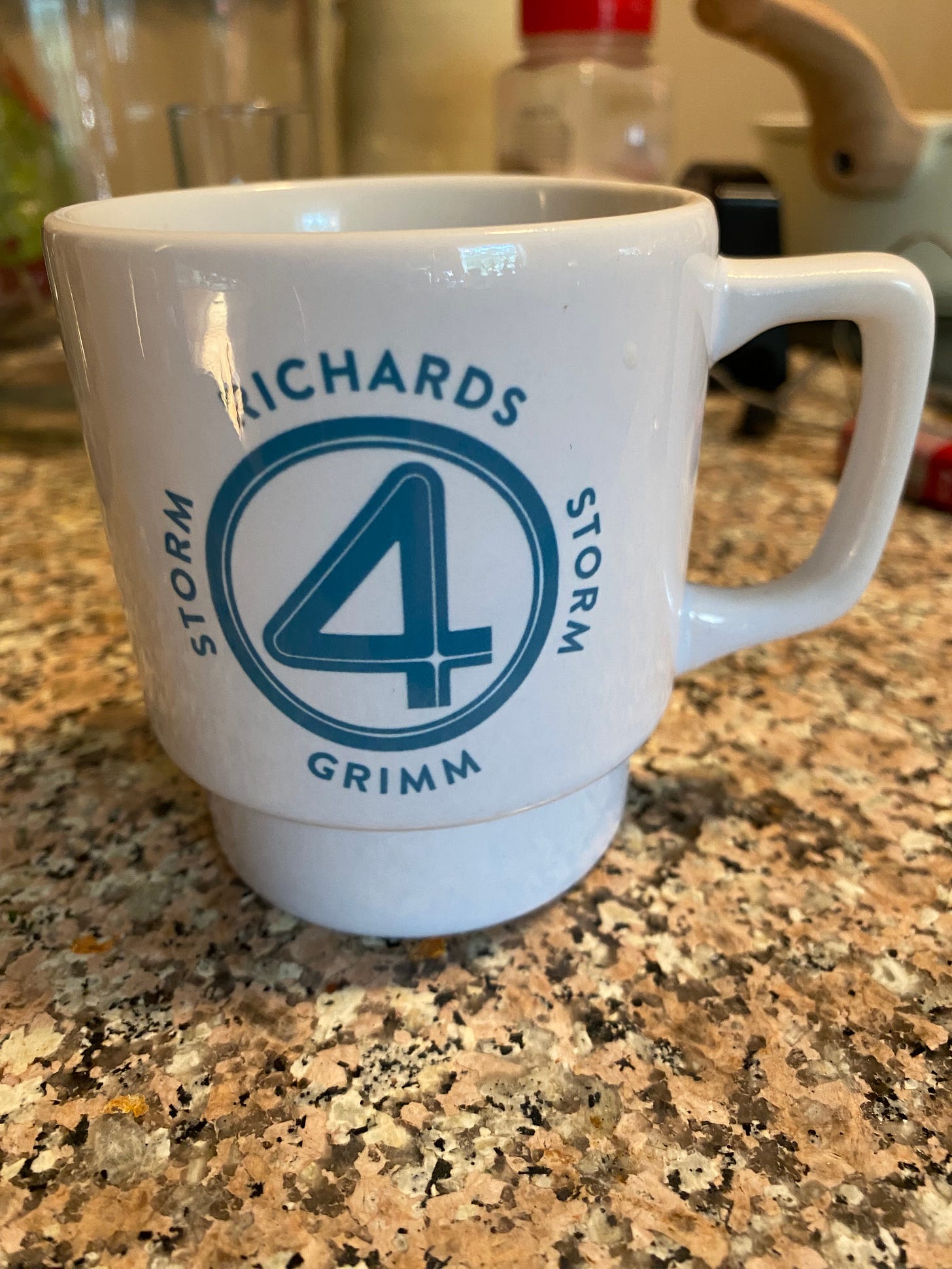
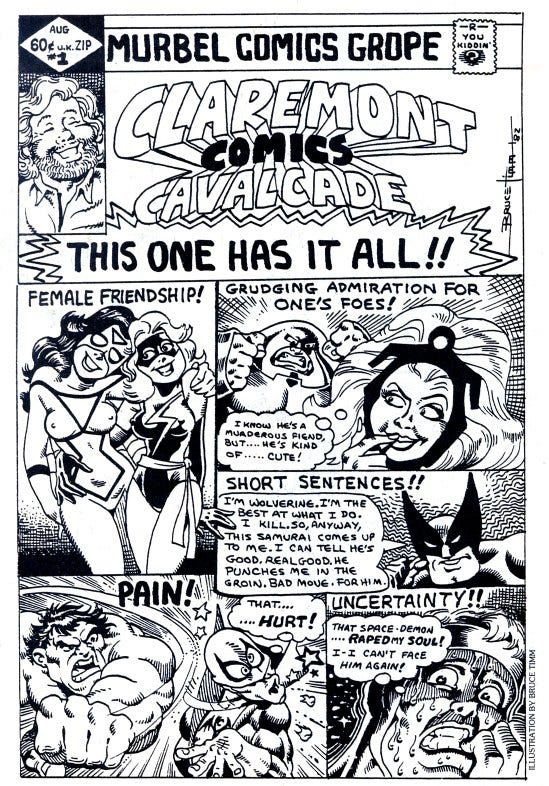

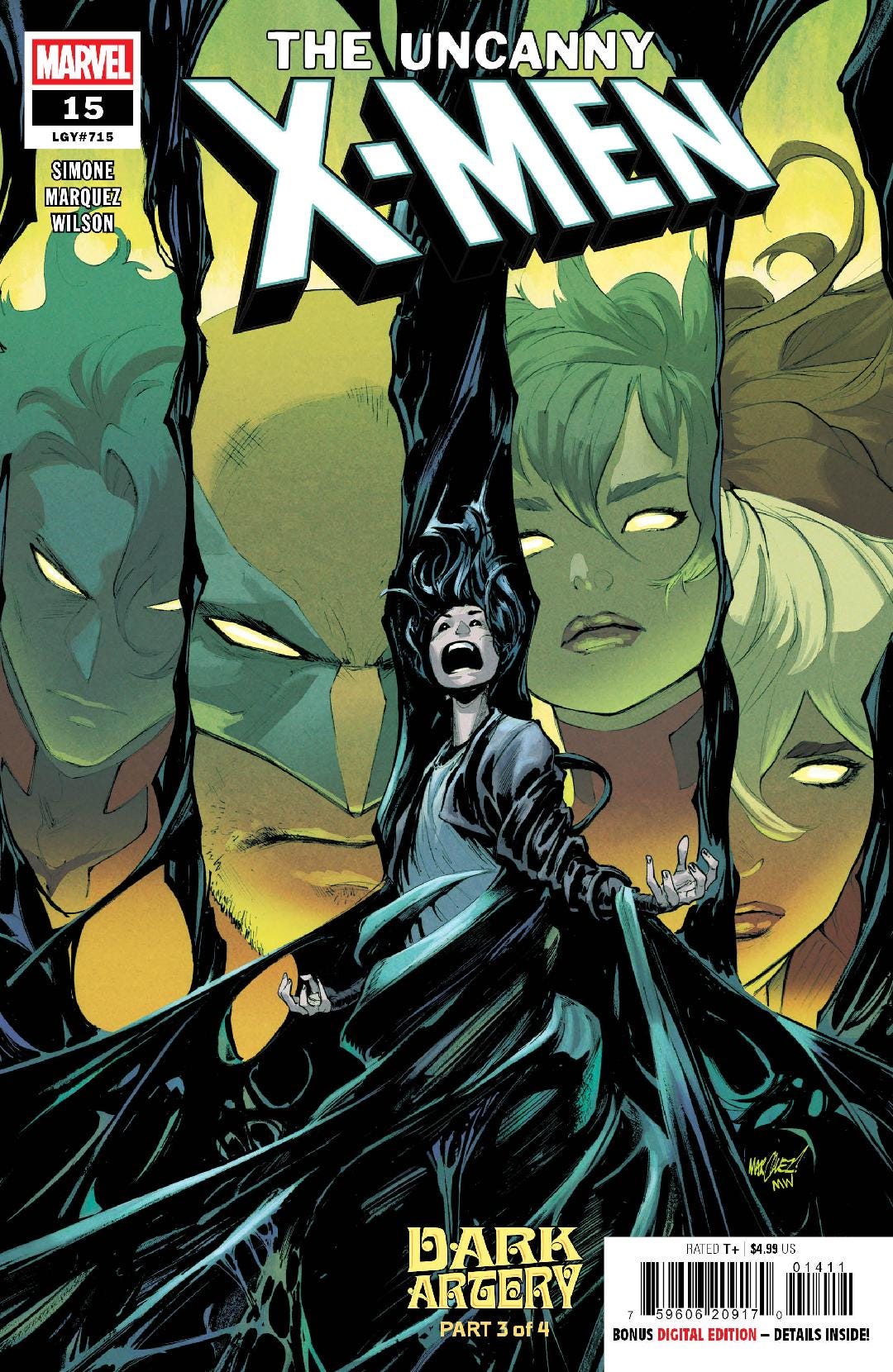


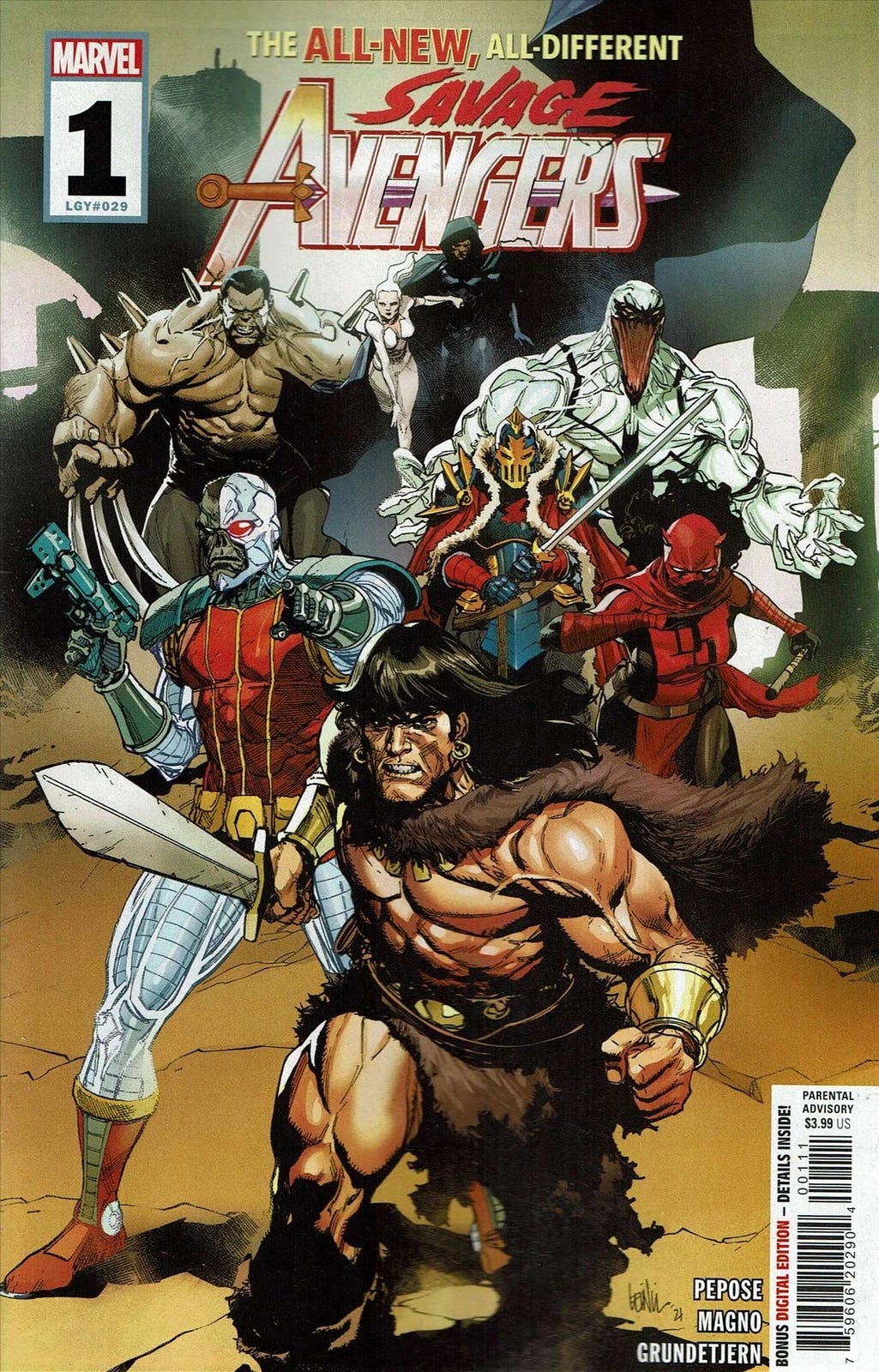


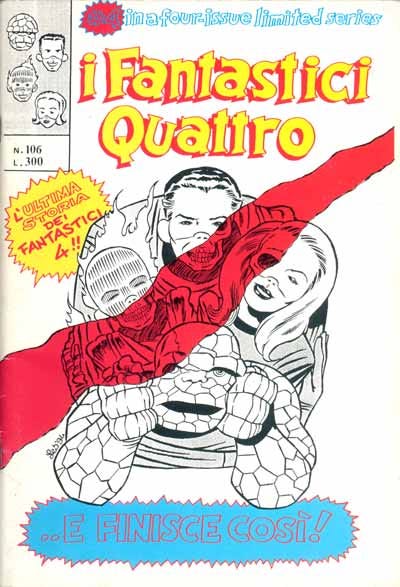

Give your self a treat and stop flirting with Andor season 2. I am in awe of how good it is and that it even got made.
Even a broken clock is right two times a day! (When I was Spidey EIC, I set a very low bar for myself, Tom.)